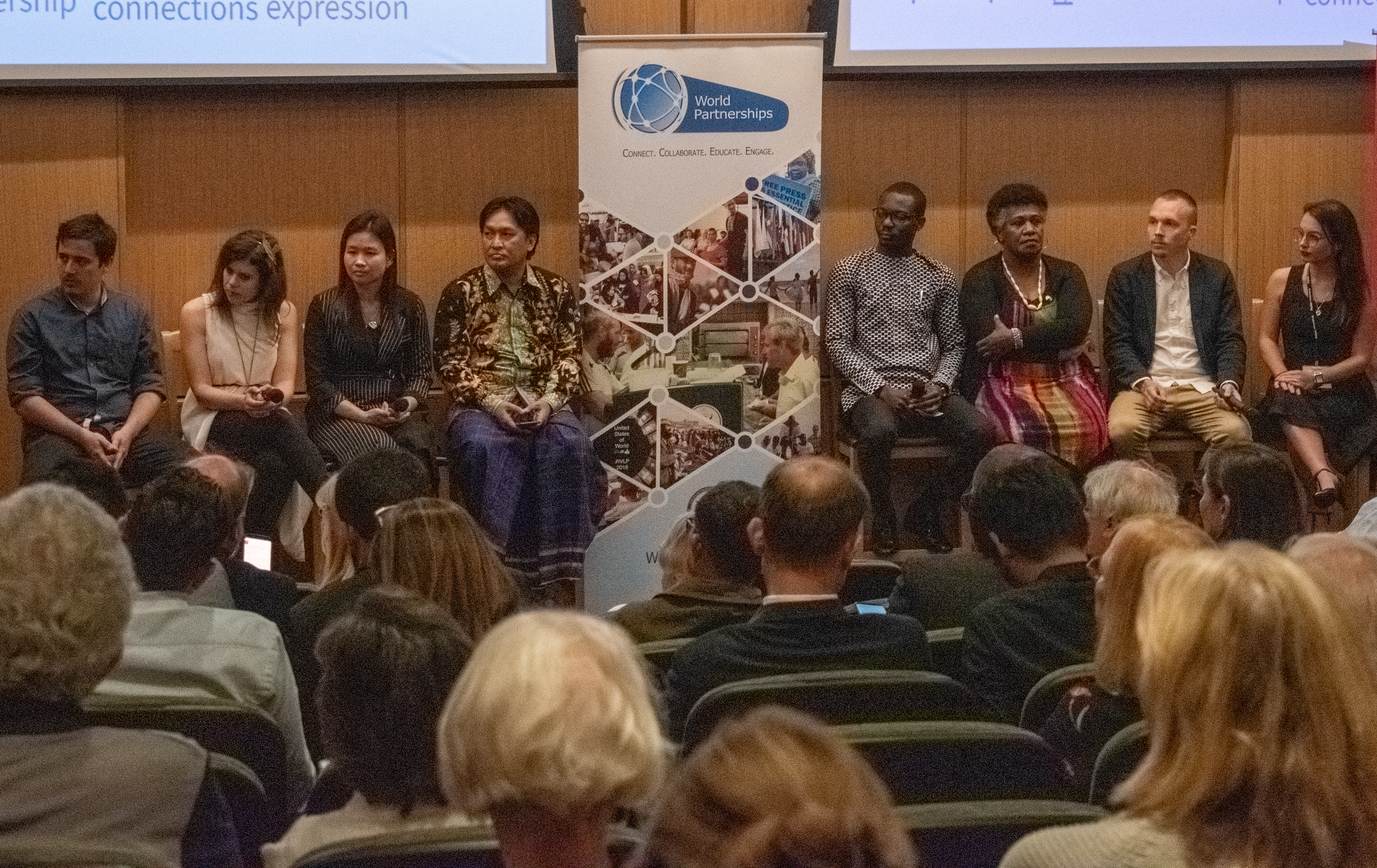“Part of the cure to fake news is equipping students with media literacy.”

Story and photo by James Bennett III
More than 20 journalists from around the world found themselves in a crowd of roughly 100 people to speak — or listen — about disinformation, fake news and freedom of the press.
Upbeat music and red spot lights welcomed audience members as they poured in to an auditorium at Lynn Pippenger Hall on Sept. 3.
The journalists represented 21 countries, ranging from Albania to Zimbabwe. However, only eight made up the panel that most questions were directed to.
Rob Lorei, public affairs director at WMNF and moderator of the event, called each of the panelists out of the audience and invited them to take a seat up front.
Once each of the journalists found their seat, Lorei shared some anecdotes about the importance of fact-checking to break the ice.
Many of the journalistic problems in each country echoed those of American journalists, but with varying degrees.
For example, Fernando Martin Boccia Torres, who reports in Paraguay, said Paraguayans are just now seeing fake news spread across social media platforms, like WhatsApp and Facebook.
Torres also said some politicians in Paraguay are responsible for spreading misinformation.
“They do not give strong evidence of why we are wrong,” Torres said. “I’m sorry for anyone who is offended, but I think they’re copying Mr. Trump in the way that he addresses media.
“Whenever there’s a news publication that says that a certain politician is telling a lie, is spreading misinformation, they just like to attack the media itself and not the arguments.”
Claire Caruana, a reporter from Malta, said her country also struggles with politicians who spread misinformation.
“It’s getting to a point where sometimes you have to write the same story explaining what the truth is, once, twice, three times and still nothing,” Caruana said. “And then you have political parties owning their own T.V. channels going back again and using misinformation.”
Working for one of only three independent news outlets, Caruana said she gets ignored at press conferences and has had to fight to ask sources a question.
Kizzy Esta Kalsakau, who reports in Vanuatu, joked that her country doesn’t produce any fake news because Vanuatu is small enough for everyone to keep tabs on each other. She did, however, mention that citizens of the relatively young country are impacted by foreign media.
Olli Seuri, a reporter from Finland, said that his country was slightly ahead of the curve in terms of misinformation.
“We had our first wave of fake news around 2015,” Seuri said. “2015 was of course, for many European countries, the year that we had the refugee crisis. And we had a really popular fake news media.
“It’s the same kind of ecosystem pretty much everywhere. You have the ecosystem, like the right-wing media ecosystem here that produces a different kind of fake news, and then it infiltrates social media.”
He added that, in general, most of the Finnish websites that produce fake news are not aligned to political parties.
Part of the cure to fake news, Seuri said, is equipping students with media literacy. Awareness and resilience were the key components to him, though.
“There is no silver bullet,” he said.



